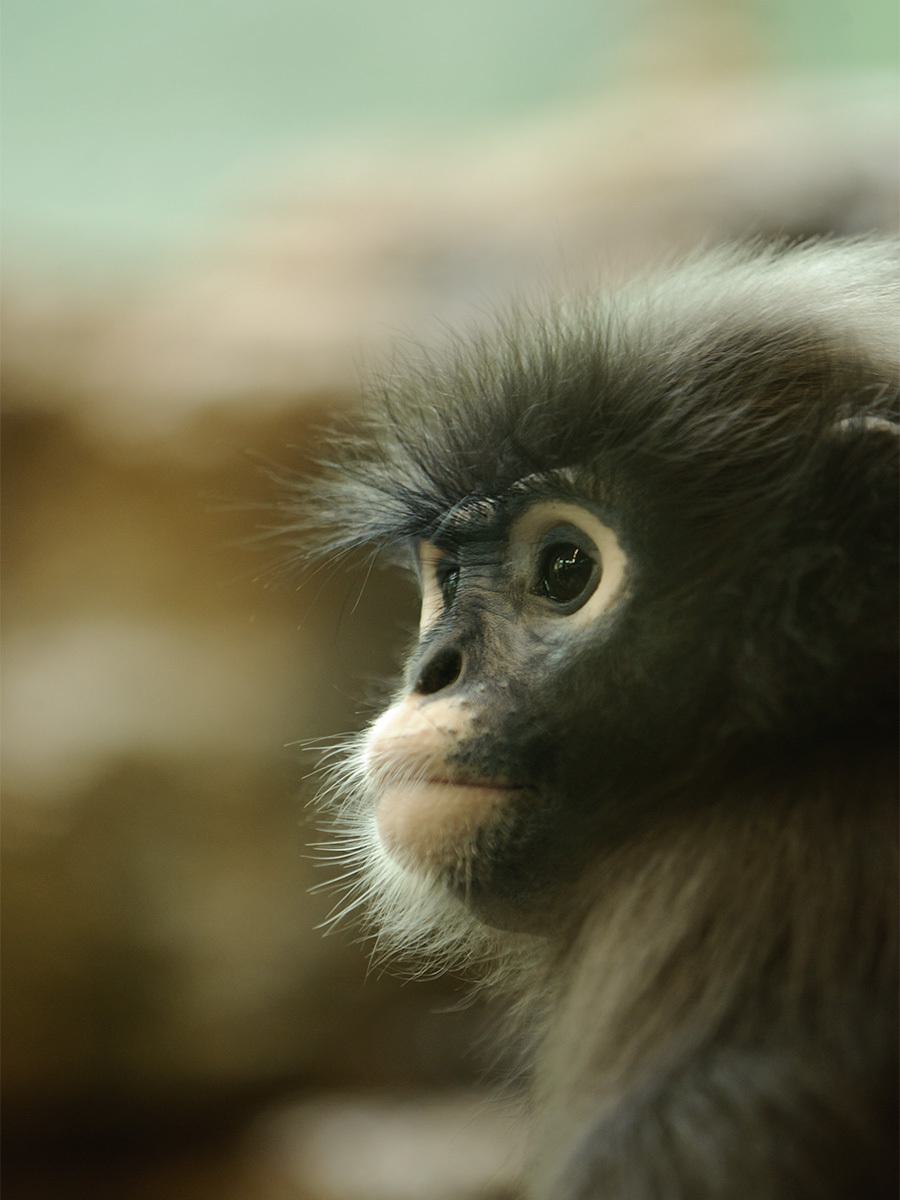
Spectacled Langur
Trachypithecus obscurus
Did you know?
- Spectacled langurs are part of the Cercopithecidae family, which they share with other African-Eurasian monkeys.
- The name “langur” is a Hindu word meaning “long-tailed.”
- They are also known as "dusky-leaf monkeys."
- They live throughout the Malay Peninsula.
- Like colobus monkeys, langurs have a "sacculated" stomach that digests the leaves they eat — similar to the multi-chambered stomach of an antelope or cow.
Young and Family
Spectacled langurs are social primates that live in troops. Females remain in their birth group and the social bonds between the related females are quite strong. Infants are bright orange at birth and are held and nurtured by other females.
Adaptations
Spectacled langurs have a "sacculated" stomach that digests the leaves they eat, similar to the multi-chambered stomach of an antelope or cow. This adaptation helps them digest tough vegetation, which is a large part of their diet. Although they cannot grasp with their tails, their long tails help them balance as they leap through the trees.
Threat Level
- Unknown
- Common
- Near Threatened
- Threatened
- Endangered
- Critically Endangered
- Extinct in the Wild
Endangered
The Spectacled Langur faces a very high risk of extinction in the wild.
Range
Malay Peninsula
Habitat
Forests, scrublands, plantations

We care about spectacled langurs
The Saint Louis Zoo participates in the Species Survival Plan for spectacled langurs, a cooperative breeding program that helps ensure a healthy population of animals. We also support them in the Primate House and Primate Canopy Trails at the Zoo. Learn more about how we are helping wildlife around the world.
Find this animal in Historic Hill

SAINT LOUIS ZOO ZONE
Historic Hill
Historic Hill is a lovely stroll through one of the oldest parts of the Saint Louis Zoo. From the 1904 World’s Fair Flight Cage to the Spanish architectural flavor of the 1920s in the Bird House, Primate House and Herpetarium to the finishing touches of our thoroughly modern exhibits, this area of the Zoo has a unique ambiance and a nostalgic history that make it a great destination.

